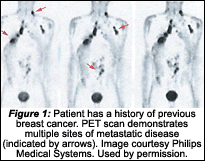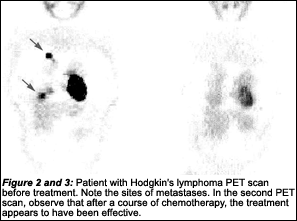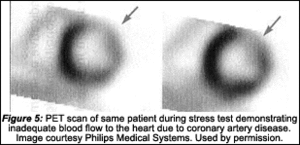Spearheaded by burgeoning scientific and clinical research literature, psychedelics have reached a level of media coverage and popular interest that has not been seen for over half a century. By “psychedelics,” we are referring to the unique class of substances that includes psilocybin (the active compound found in so-called “magic mushrooms”), LSD, dimethyltryptamine (DMT), ayahuasca, 5-MeO-DMT, and mescaline – each of which occurs in the natural world (except for LSD, which is a semi-synthetic compound).
An Introduction to Positron Emission Tomography
What is positron emission tomography (PET)? First, I wish to acknowledge that I am no expert regarding this topic; I simply wish to discuss the present capabilities of this amazing diagnostic tool. PET has broadened our understanding of the normal and abnormal physiology of the human body. It allows us an opportunity to examine the biochemical functions of patients as a part of their clinical care, and provides this ability by integrating two technologies: the tracer kinetic assay method and computed tomography.
The "tracer kinetic assay" method utilizes a radiolabeled, biologically active compound (tracer), and a mathematical model that describes the kinetics of the tracer as it participates in a biological process similar to, but far more sophisticated than, the radioisotopes in bone scan. The tissue tracer concentration measurement required by the tracer kinetic model is provided by the PET scanner, with the final result being an image of the anatomic distribution of the biological process under study.
Radiolabeled tracers and the tracer kinetic method are employed throughout the biological sciences to measure numerous biologic processes such as blood flow; membrane transport; metabolism; drug interactions with chemical systems; and marker assays using recombinant DNA techniques. Again, I point out that though most of the process is beyond my comprehension, this imaging tool is available and utilized regularly to evaluate patients for ailments such as neoplasms, cardiac viability and brain disorders.
The radioisotopes used in PET are 11C, 13N, 15O and 18F - the radioactive forms of natural elements. These radioisotopes pass through the body, emit radiation and collect in various organs targeted for examination. A computer reassembles the signals into actual images. The PET scan can be used to determine if a neoplasm is malignant, and if there are other areas of metastases. It also can evaluate whether the treatment has been effective. It is regularly used in the evaluation of lung, colorectal, breast and prostate cancers.
PET is the most accurate test to determine the viability of heart tissue for revascularization. It is presently the best method for determining the presence of Parkinson's disease, and is used to differentiate Alzheimer's from other types of dementia or depression. It also can effectively demonstrate the source of many common cancers, and heart and neurological diseases. PET is a proven diagnostic imaging modality that displays biological function in organ systems in the human body in a way never before available.
The following images illustrate how PET is used to diagnose and manage disease processes:




Deborah Pate, DC, DACBR
San Diego, California
patedacbr@cox.net



